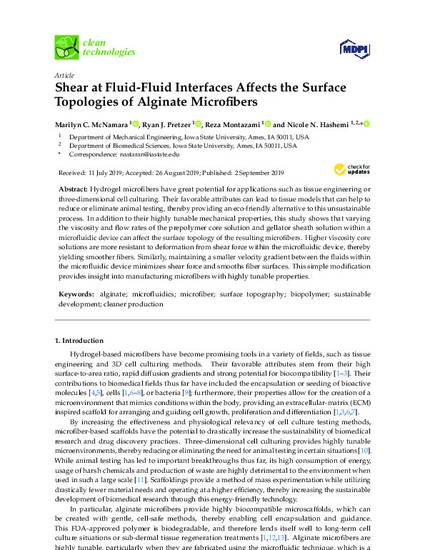
Hydrogel microfibers have great potential for applications such as tissue engineering or three-dimensional cell culturing. Their favorable attributes can lead to tissue models that can help to reduce or eliminate animal testing, thereby providing an eco-friendly alternative to this unsustainable process. In addition to their highly tunable mechanical properties, this study shows that varying the viscosity and flow rates of the prepolymer core solution and gellator sheath solution within a microfluidic device can affect the surface topology of the resulting microfibers. Higher viscosity core solutions are more resistant to deformation from shear force within the microfluidic device, thereby yielding smoother fibers. Similarly, maintaining a smaller velocity gradient between the fluids within the microfluidic device minimizes shear force and smooths fiber surfaces. This simple modification provides insight into manufacturing microfibers with highly tunable properties.
Available at: http://works.bepress.com/nastaran_hashemi/47/

This article is published as McNamara, Marilyn C., Ryan J. Pretzer, Reza Montazami, and Nicole N. Hashemi. "Shear at Fluid-Fluid Interfaces Affects the Surface Topologies of Alginate Microfibers." Clean Technologies 1, no. 1 (2019): 265-272. DOI: 10.3390/cleantechnol1010018. Posted with permission.